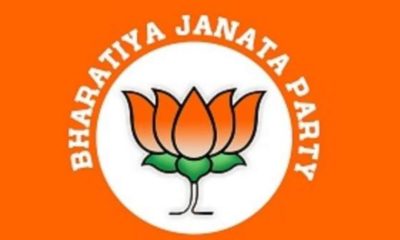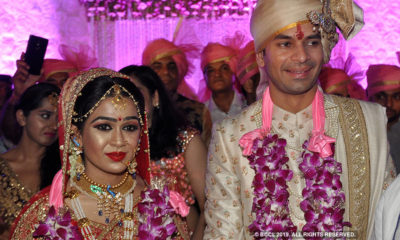Top News
Taking cue from Modi, Bihar parties take fight to ‘virtual media’

Patna: Impressed by the tremendous political benefits reaped by BJP and AAP due to high-voltage social media and high-end digital campaigning in the 2014 Lok Sabha and Delhi assembly elections, Bihar parties too are eagerly jumping on to the e-bandwagon.
All the major parties – Janata Dal -United (JD-U), Rashtriya Janata Dal (RJD), Congress, Lok Janshakti Party (LJP) and Hindustani Awam Morcha – are making efforts to make their presence felt on the net for the forthcoming Bihar election. Bharatiya Janata Party (BJP) is also expected to shift its well oiled cyber machine to Bihar soon.
From interactive graphical representation of the work done by their parties and making promises on Facebook to sending interactive and informative messages on WhatsApp, they are doing it all to woo voters.
“It’s the best way to engage the youth and first time voters. We have set up a ‘war room’ to ensure that we remain ahead of our rivals in digital campaigning,” K.C Tyagi, chief spokesperson of JD-U, told IANS over phone.
“We have seen how Prime Minister Narendra Modi quite effectively used the social media and high-tech campaigning in the 2014 elections to ride to power at the centre,” he added.
According to Bihar’s information and technology department, an estimated 5 lakh out of the state’s total population of 110 million use the internet on computers while 20 to 30 million use it on mobile phones.
Tyagi says the 2014 general elections changed the way elections were fought in India. Although the tech-savvy campaign brought rich dividents for the BJP, he says it also raised the overall cost of fighting elections.
Abdul Bari Siddiqui of RJD, who is also leader of the opposition in the Bihar assembly, says that although the reach of social media among Bihar’s population was limited, yet one cannot “deny it’s positive and long-lasting effect on the public mind.”
Talking on the phone, Siddiqui said digital campaigning involved hiring of tech experts, setting up of media rooms and manning them round-the-clock.
Under the JD-U’s ‘war room’ strategy, 400 trucks equipped with TV sets, music systems, microphones and speakers will move from village to village and showcase the government’s achievements. The personnel manning these vehicles will also interact with villagers and their local representatives to get their ideas and suggestions for Bihar’s development in future.
Flash mobs and street plays are also being planned by JD-U to gain the support of the younger generation, which is expected to play a crucial role in the legislative elections expected to be held in September or October this year.
Parties opposed to the JD-U have started Facebook pages to engage people on the social media in the run-up to the polls.
So apart from the traditional methods like high-pitch sloganeering, colourful buntings, posters and large hoardings to grab the eyeballs of the Bihar electorate, e-campaigning will add more punch to the campaigning by political parties aiming to win a majority in the state assembly.
Entertainment
Casino Days Reveal Internal Data on Most Popular Smartphones

International online casino Casino Days has published a report sharing their internal data on what types and brands of devices are used to play on the platform by users from the South Asian region.
Such aggregate data analyses allow the operator to optimise their website for the brands and models of devices people are actually using.
The insights gained through the research also help Casino Days tailor their services based on the better understanding of their clients and their needs.
Desktops and Tablets Lose the Battle vs Mobile
The primary data samples analysed by Casino Days reveal that mobile connections dominate the market in South Asia and are responsible for a whopping 96.6% of gaming sessions, while computers and tablets have negligible shares of 2.9% and 0.5% respectively.
The authors of the study point out that historically, playing online casino was exclusively done on computers, and attribute thе major shift to mobile that has unfolded over time to the wide spread of cheaper smartphones and mobile data plans in South Asia.
“Some of the reasons behind this massive difference in device type are affordability, technical advantages, as well as cheaper and more obtainable internet plans for mobiles than those for computers,” the researchers comment.
Xiaomi and Vivo Outperform Samsung, Apple Way Down in Rankings
Chinese brands Xiaomi and Vivo were used by 21.9% and 20.79% of Casino Days players from South Asia respectively, and together with the positioned in third place with a 18.1% share South Korean brand Samsung dominate the market among real money gamers in the region.
Cupertino, California-based Apple is way down in seventh with a user share of just 2.29%, overshadowed by Chinese brands Realme (11.43%), OPPO (11.23%), and OnePlus (4.07%).
Huawei is at the very bottom of the chart with a tiny share just below the single percent mark, trailing behind mobile devices by Motorola, Google, and Infinix.
The data on actual phone usage provided by Casino Days, even though limited to the gaming parts of the population of South Asia, paints a different picture from global statistics on smartphone shipments by vendors.
Apple and Samsung have been sharing the worldwide lead for over a decade, while current regional leader Xiaomi secured their third position globally just a couple of years ago.
Striking Android Dominance among South Asian Real Money Gaming Communities
The shifted market share patterns of the world’s top smartphone brands in South Asia observed by the Casino Days research paper reveal a striking dominance of Android devices at the expense of iOS-powered phones.
On the global level, Android enjoys a comfortable lead with a sizable 68.79% share which grows to nearly 79% when we look at the whole continent of Asia. The data on South Asian real money gaming communities suggests that Android’s dominance grows even higher and is north of the 90% mark.
Among the major factors behind these figures, the authors of the study point to the relative affordability of and greater availability of Android devices in the region, especially when manufactured locally in countries like India and Vietnam.
“And, with influencers and tech reviews putting emphasis on Android devices, the choice of mobile phone brand and OS becomes easy; Android has a much wider range of products and caters to the Asian online casino market in ways that Apple can’t due to technical limitations,” the researchers add.
The far better integration achieved by Google Pay compared to its counterpart Apple Pay has also played a crucial role in shaping the existing smartphone market trends.
Content provided by Adverloom























